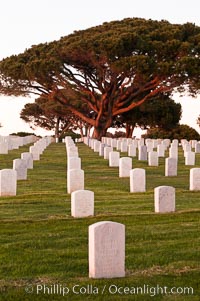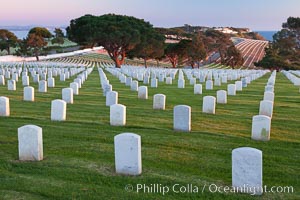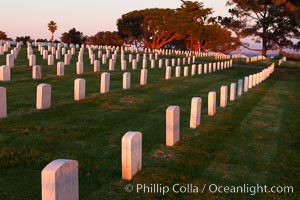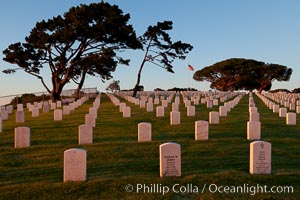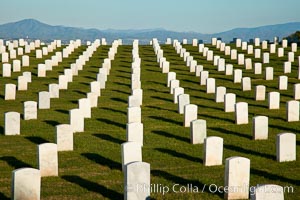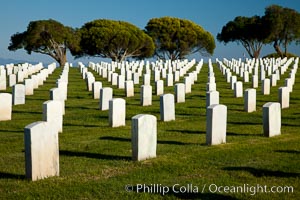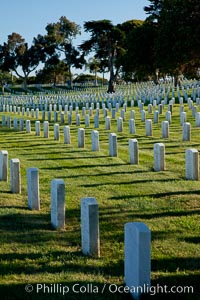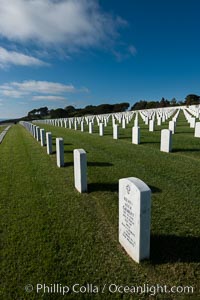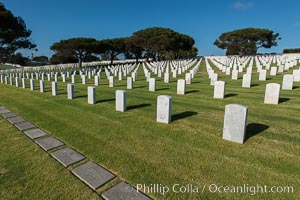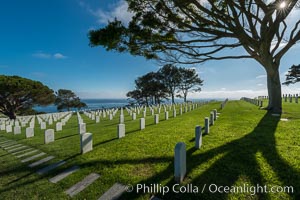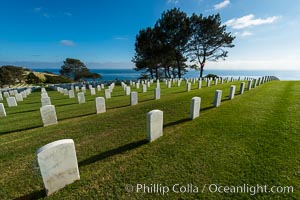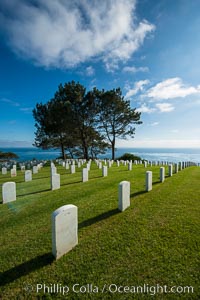
Fort Rosecrans National Cemetery.
Location: San Diego, California
Image ID: 26588
Panorama dimensions: 4842 x 16071
Location: San Diego, California
Image ID: 26588
Panorama dimensions: 4842 x 16071
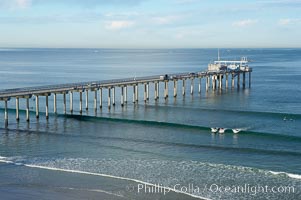
The Scripps Institution of Oceanography research pier is 1090 feet long and was built of reinforced concrete in 1988, replacing the original wooden pier built in 1915. The Scripps Pier is home to a variety of sensing equipment above and below water that collects various oceanographic data. The Scripps research diving facility is located at the foot of the pier. Fresh seawater is pumped from the pier to the many tanks and facilities of SIO, including the Birch Aquarium. The Scripps Pier is named in honor of Ellen Browning Scripps, the most significant donor and benefactor of the Institution.
Location: Scripps Institution of Oceanography, La Jolla, California
Image ID: 14748
Location: Scripps Institution of Oceanography, La Jolla, California
Image ID: 14748
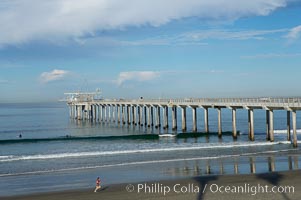
The Scripps Institution of Oceanography research pier is 1090 feet long and was built of reinforced concrete in 1988, replacing the original wooden pier built in 1915. The Scripps Pier is home to a variety of sensing equipment above and below water that collects various oceanographic data. The Scripps research diving facility is located at the foot of the pier. Fresh seawater is pumped from the pier to the many tanks and facilities of SIO, including the Birch Aquarium. The Scripps Pier is named in honor of Ellen Browning Scripps, the most significant donor and benefactor of the Institution.
Location: Scripps Institution of Oceanography, La Jolla, California
Image ID: 14749
Location: Scripps Institution of Oceanography, La Jolla, California
Image ID: 14749
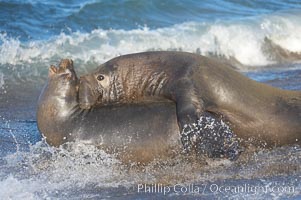
A bull elephant seal forceably mates (copulates) with a much smaller female, often biting her into submission and using his weight to keep her from fleeing. Males may up to 5000 lbs, triple the size of females. Sandy beach rookery, winter, Central California.
Species: Elephant seal, Mirounga angustirostris
Location: Piedras Blancas, San Simeon, California
Image ID: 15410
Species: Elephant seal, Mirounga angustirostris
Location: Piedras Blancas, San Simeon, California
Image ID: 15410
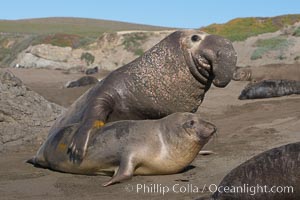
A bull elephant seal forceably mates (copulates) with a much smaller female, often biting her into submission and using his weight to keep her from fleeing. Males may up to 5000 lbs, triple the size of females. Sandy beach rookery, winter, Central California.
Species: Elephant seal, Mirounga angustirostris
Location: Piedras Blancas, San Simeon, California
Image ID: 15411
Species: Elephant seal, Mirounga angustirostris
Location: Piedras Blancas, San Simeon, California
Image ID: 15411
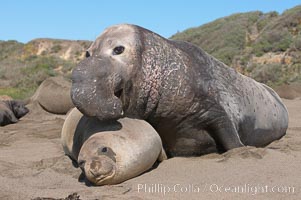
A bull elephant seal forceably mates (copulates) with a much smaller female, often biting her into submission and using his weight to keep her from fleeing. Males may up to 5000 lbs, triple the size of females. Sandy beach rookery, winter, Central California.
Species: Elephant seal, Mirounga angustirostris
Location: Piedras Blancas, San Simeon, California
Image ID: 15447
Species: Elephant seal, Mirounga angustirostris
Location: Piedras Blancas, San Simeon, California
Image ID: 15447
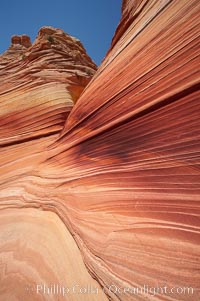
Sandstone striations. Prehistoric sand dunes, compressed into sandstone, are now revealed in sandstone layers subject to the carving erosive forces of wind and water.
Location: North Coyote Buttes, Paria Canyon-Vermilion Cliffs Wilderness, Arizona
Image ID: 20733
Location: North Coyote Buttes, Paria Canyon-Vermilion Cliffs Wilderness, Arizona
Image ID: 20733
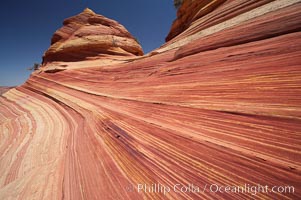
Sandstone striations. Prehistoric sand dunes, compressed into sandstone, are now revealed in sandstone layers subject to the carving erosive forces of wind and water.
Location: North Coyote Buttes, Paria Canyon-Vermilion Cliffs Wilderness, Arizona
Image ID: 20735
Location: North Coyote Buttes, Paria Canyon-Vermilion Cliffs Wilderness, Arizona
Image ID: 20735
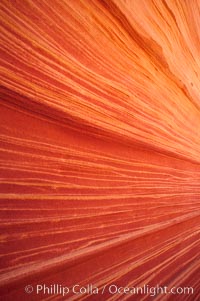
Sandstone striations. Prehistoric sand dunes, compressed into sandstone, are now revealed in sandstone layers subject to the carving erosive forces of wind and water.
Location: North Coyote Buttes, Paria Canyon-Vermilion Cliffs Wilderness, Arizona
Image ID: 20742
Location: North Coyote Buttes, Paria Canyon-Vermilion Cliffs Wilderness, Arizona
Image ID: 20742
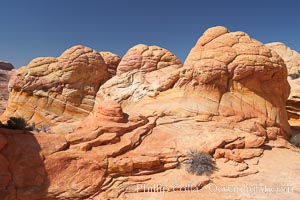
Brain rocks. Sandstone is curiously eroded through the forces water and wind acting over eons. Cracks and joints arise when water freezes and expands repeatedly, braking apart the soft sandstone.
Location: North Coyote Buttes, Paria Canyon-Vermilion Cliffs Wilderness, Arizona
Image ID: 20750
Location: North Coyote Buttes, Paria Canyon-Vermilion Cliffs Wilderness, Arizona
Image ID: 20750
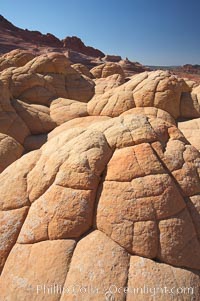
Brain rocks. Sandstone is curiously eroded through the forces water and wind acting over eons. Cracks and joints arise when water freezes and expands repeatedly, braking apart the soft sandstone.
Location: North Coyote Buttes, Paria Canyon-Vermilion Cliffs Wilderness, Arizona
Image ID: 20754
Location: North Coyote Buttes, Paria Canyon-Vermilion Cliffs Wilderness, Arizona
Image ID: 20754
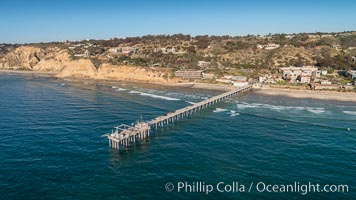
Aerial Photo of Scripps Pier. SIO Pier. The Scripps Institution of Oceanography research pier is 1090 feet long and was built of reinforced concrete in 1988, replacing the original wooden pier built in 1915. The Scripps Pier is home to a variety of sensing equipment above and below water that collects various oceanographic data. The Scripps research diving facility is located at the foot of the pier. Fresh seawater is pumped from the pier to the many tanks and facilities of SIO, including the Birch Aquarium. The Scripps Pier is named in honor of Ellen Browning Scripps, the most significant donor and benefactor of the Institution.
Image ID: 30739
Image ID: 30739
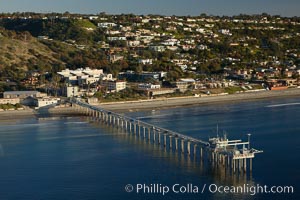
SIO Pier. The Scripps Institution of Oceanography research pier is 1090 feet long and was built of reinforced concrete in 1988, replacing the original wooden pier built in 1915. The Scripps Pier is home to a variety of sensing equipment above and below water that collects various oceanographic data. The Scripps research diving facility is located at the foot of the pier. Fresh seawater is pumped from the pier to the many tanks and facilities of SIO, including the Birch Aquarium. The Scripps Pier is named in honor of Ellen Browning Scripps, the most significant donor and benefactor of the Institution.
Location: Scripps Institution of Oceanography, La Jolla, California
Image ID: 22313
Location: Scripps Institution of Oceanography, La Jolla, California
Image ID: 22313
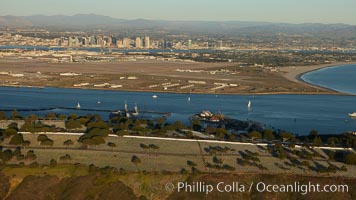
Fort Rosecrans National Cemetery, situated overlooking the Pacific Ocean on Point Loma, with San Diego Bay and Coronado Island in the distance.
Location: San Diego, California
Image ID: 22419
Location: San Diego, California
Image ID: 22419
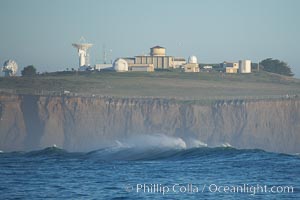
Radar installation owned by Vandenberg Air Force Base rises atop Pillar Point.
Location: Half Moon Bay, California
Image ID: 15342
Location: Half Moon Bay, California
Image ID: 15342
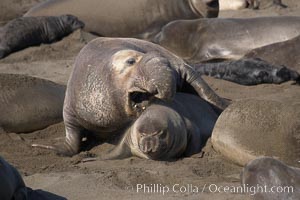
A bull elephant seal forceably mates (copulates) with a much smaller female, often biting her into submission and using his weight to keep her from fleeing. Males may up to 5000 lbs, triple the size of females. Sandy beach rookery, winter, Central California.
Species: Elephant seal, Mirounga angustirostris
Location: Piedras Blancas, San Simeon, California
Image ID: 15412
Species: Elephant seal, Mirounga angustirostris
Location: Piedras Blancas, San Simeon, California
Image ID: 15412
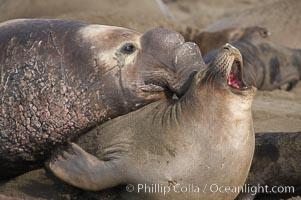
A bull elephant seal forceably mates (copulates) with a much smaller female, often biting her into submission and using his weight to keep her from fleeing. Males may up to 5000 lbs, triple the size of females. Sandy beach rookery, winter, Central California.
Species: Elephant seal, Mirounga angustirostris
Location: Piedras Blancas, San Simeon, California
Image ID: 15413
Species: Elephant seal, Mirounga angustirostris
Location: Piedras Blancas, San Simeon, California
Image ID: 15413
